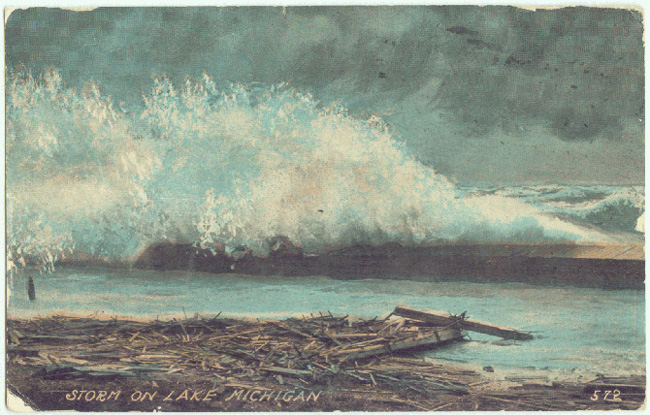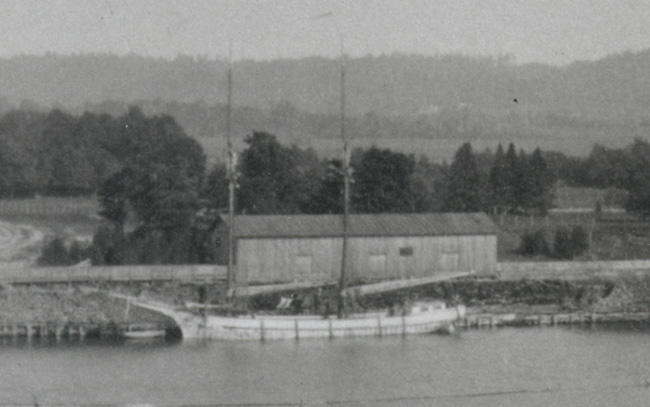Lake Michigan Was Often a Dangerous Place
Next | Previous | Return to Start
|
In a gale on Lake Michigan in November of 1834, the two-masted schooner Prince Eugene was driven ashore and wrecked 8 miles north of the Manistee River mouth. She was carrying a cargo of mixed merchandise -- fabrics, leather, disassembled parlor stoves, and household goods -- valued at $70,000. In 1834, a local newspaper seemed surprised at such an event on Lake Michigan. November 19, 1834. Quoting the St. Joseph Statesman. – SHIPWRECK – …Lake Michigan is one of the best lakes for navigation in the west; and this has been the only occurrence of the kind, to our knowledge, that ever happened in her waters. For the want of good and sufficient harbors, accidents of minor importance have occurred in attempting to discharge their cargoes. For this reason, on merchandize destined to the southern part of Lake Michigan, insurance cannot be obtained to cover any loss occurring in site of the light house at the port of destination. Merchants living in the sector have not, therefore, generally effected insurance at all. Such being the fact, we fear that the wreck of the Prince Eugene, much individual loss will be sustained. --Detroit Democratic Free Press Lake Michigan's waters were navigable when its winter ice thawed in the spring until it froze again in the fall. When the seasons changed, particularly in the fall, Lake Michigan storms were dangerous for ships of all kinds. The Prince Eugene was the first wreck in the Arcadia area but it would not be the last. “Lake Michigan sailors had to be particularly sensitive to the whims of the weather because they navigated a body of water just large enough to develop dangerous heavy seas, yet confined enough to allow little in the way of room to run before the storm. Indeed, the inland character of the lakes made them more treacherous than the oceans as storms developed much more suddenly and the waves, striking at much shorter intervals than ocean swells, were more violent and deadly. … These facts, together with the heavy volume of commerce on the lake and the scarcity of safe harbors, made the risk of mishap on Lake Michigan very great. Lake Michigan has also had more shipping disasters – those involving large loss of life – than all the other Great Lakes combined.” |
|
|
“Traveling by ship on the Great Lakes in the early days was a dangerous business, not to be taken lightly. It was particularly hazardous in the spring and fall, when great storms lash the lakes into a frenzy. … Between 1878 and 1898, almost 6,000 vessels foundered on the Great Lakes.“ Hiding from a Storm Lake Michigan has a regular shore with few islands, none in the Arcadia area. Ships caught in a westerly or northwesterly storm along Lake Michigan’s northeast shore had three alternatives:
Arcadia’s safe harbor didn't open until 1893. Before then Arcadia and Pierport to the south had only bridge piers that extended into Lake Michigan. During a severe storm, a bridge pier provided little protection. A docked ship could be thrown into the pier, damaging both ship and pier. |
|
|
|
|

